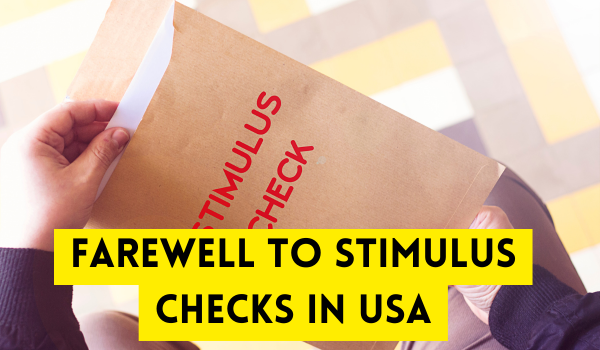As the economic landscape changes in America, federal support systems are being reshaped by bidding farewell to Stimulus Checks in the USA. One of the biggest changes in 2025 is the phase-out of stimulus checks in favor of more targeted financial aid.
Farewell to Stimulus Checks in USA
After several years of direct stimulus checks helping American households through crises like the COVID-19 pandemic and inflation surges, federal authorities are signaling a major shift in economic relief policy.
According to recent reports from the U.S. Treasury and the Congressional Budget Office, the era of large-scale stimulus checks is ending. Instead, new means-tested and employment-linked assistance programs will take their place. Here’s what’s changing and how it affects millions of citizens.
Why Stimulus Checks Are Ending
The federal government spent over $930 billion in direct payments between 2020 and 2023. While these checks helped avoid deeper recessions, they also contributed to inflationary pressure and budget deficits. Now, with unemployment stabilizing and wages slowly rising, the Biden administration and policymakers are focusing on long-term, sustainable relief strategies.

Key reasons for ending blanket stimulus checks include
- Reducing the national debt
- Targeting funds to those most in need
- Preventing overheating of the economy
- Encouraging return to work and job market participation
What Will Replace Stimulus Checks?
In place of lump-sum checks sent to nearly all Americans, the government will roll out customized financial support programs. Only eligible groups, based on income, employment status, and family structure, will receive this help.
Here are the main replacements:
- Expanded Earned Income Tax Credit (EITC) for low-wage workers
- Monthly Child Benefit Payments (under a revised Child Tax Credit model)
- Job-linked Incentives for rejoining the workforce
- Digital Food Assistance Cards (modernized SNAP system)
- Housing Vouchers for renters with income caps
Mostly delivered through tax systems or public benefits portals, these new formats prioritize sustained support over one-time relief.
Who Will Benefit Under the New System?
The new programs aim to benefit
- Low-income working families
- Single parents with children
- Senior citizens on fixed incomes
- Unemployed individuals enrolled in job training
- Disabled citizens and veterans
Unlike earlier stimulus checks that reached even upper-middle-income households, the upcoming support system will exclude families earning above preset thresholds (e.g., $80,000+ for individuals or $160,000+ for joint filers).
How Payments Will Be Distributed
Instead of mass disbursements, future aid will be handled through monthly credits, tax returns, and verified benefit portals. Some assistance may be state-specific, requiring local applications.
Payment channels include:
- Direct deposit through IRS or Treasury systems
- Prepaid digital cards for SNAP, housing, and utility credits
- Tax credit reductions reflected in annual filings
Households may need to submit documentation more frequently and update their earnings status to avoid overpayments or disqualification.
Implications for the Average American
While some may feel disappointed at the loss of broad-based stimulus payments, the new system is designed for targeted impact. Economists say this approach will:
- Provide ongoing support to the most vulnerable
- Minimize misuse and overspending
- Improve economic resilience without fuelling inflation
Still, the system demands more paperwork, greater income transparency, and eligibility reviews, which could slow down access for some recipients.
The age of universal stimulus checks is ending, but a more focused and consistent support system is taking shape—one that aims to protect those truly in need without burdening the economy.